There are those who believe that a university education is almost a prerequisite to becoming a successful author. Nothing could be further from the truth. In fact, you might be surprised to find out how many authors made names for themselves without finishing — or, in some cases, ever attending — college. Here are a few.
Ernest Hemingway
Hemingway was raised in Oak Park, Illinois. He never attended college. After high school, he went to work for The Kansas City Star. During World War I, he left for the Italian front where he became an ambulance driver. In 1918, he was seriously wounded and returned home. His wartime experiences formed the basis for his novel A Farewell to Arms (1929). He went on to write such major best sellers as For Whom the Bell Tolls, The Sun Also Rises, and The Old Man and The Sea. He won the Novel Prize in literature in 1954. Because he had suffered a series in injuries in two recent African plane crashes, he didn’t travel to Stockholm to accept the prize, Instead, he sent a letter to be read. In part, it said: “Writing, at its best, is a lonely life. Organizations for writers palliate the writer’s loneliness but I doubt if they improve his writing. He grows in public stature as he sheds his loneliness and often his work deteriorates. For he does his work alone and if he is a good enough writer he must face eternity, or the lack of it, each day.”
Jack London
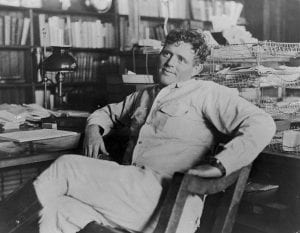
Jack London is famous for having a variety of very odd jobs (he had a stint as an oyster pirate) throughout his life, but you may not know that he began this practice at the ripe age of ten. By the time he was thirteen he had quit school, still working a handful of jobs, but devouring every book he could find. London eventually ended up at UC Berkeley, but his journey to college was hardly traditional. As a young boy, he found a librarian at the Oakland Public Library who was willing to mentor him, and, with her encouragement, London was essentially self-educated. He worked long hours at a cannery beginning at age 13 and later began to work as a tramp, begging for money. At 18, he spent a month in jail for vagrancy, only after which he returned to complete high school. A pub owner and friend loaned him the money to attend UC Berkeley, but London left a year later when the money ran out and never graduated. Even without a college education, he penned such classics as The Call of the Wild and White Fang. He published his first collection of short stories at age 24.
Harper Lee
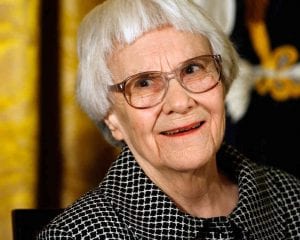
The Pulitzer-Prize winning author is a lesson in following your dreams. Lee had been interested in literature from high school, but in college, decided to pursue a career in law. Though her interest in writing only increased as she grew older, in her junior year at the University of Alabama in Tuscaloosa, she was accepted into the school’s law program, set up so students could begin their law studies concurrently with undergraduate work. After only a semester, she dropped out and moved to New York City to become a writer. And we all know how that story ended — not too shabbily. Her most famous work was To Kill a Mockingbird. A sequel, Go Set a Watchman, was published in 2015. It was actually written by Lee before To Kill a Mockingbird, but is set some 20 years later.
H. G. Wells
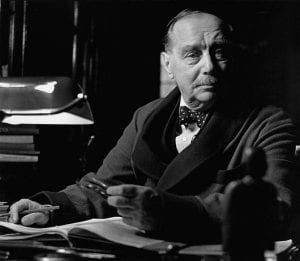
The legendary science fiction author was pulled out of school when his father, a professional cricket player, fractured his thigh. Wells was only 11 years old, but the loss of the grand part of the family’s income forced the children to take apprenticeships — Wells hated his apprenticeship as a draper at the Southsea Drapery Emporium. His experiences there later inspired the novels The Wheels of Chance and Kipps. Every job he had was a nightmare until he was finally able to support himself as a teacher and to continue educating himself in hopes of becoming a writer. Wells went on to become a famous, science fiction novelist known for The War of the Worlds and The Time Machine.
George Bernard Shaw
The famous playwright attended several schools in his youth before dropping out entirely at age 14, finding little value in formal education. “Schools and schoolmasters, as we have them today,” he once wrote, “are not popular as places of education and teachers, but rather prisons and turnkeys in which children are kept to prevent them disturbing and chaperoning their parents.” A voracious learner and reader, he spent hours in the National Gallery of Dublin reading about art, history, and literature and beginning to write on his own. Some of his best-known novels include Pygmalion, Saint Joan, and Mrs. Warren’s Profession.
Jane Austen
Money proved to be a problem for Austen and though she was originally a boarding school student, her education came to a standstill when her parents could no longer afford to keep her in the classroom. And still, she wrote “Pride and Prejudice,” “Mansfield Park” and “Sense and Sensibility.”

Ray Bradbury
Ray Bradbury is a familiar name to the generations of high school students required to read his classic novel Fahrenheit 451. These students might be irked to discover that Bradbury barely finished high school himself and had no interest in attending college. This is not to imply that he was unmotivated; he started writing stories on butcher paper at age 11 during the Depression. He claimed he didn’t “believe in colleges” and put his faith in libraries instead, to which all children (even poor ones) had access. Bradbury even wrote Fahrenheit 451 in a library, renting a room with a typewriter for an hourly charge. Other books by Bradbury include The Martian Chronicles, Something Wicked This Way Comes, Dandelion Wine, and The Illustrated Man.
Maya Angelou
In response to the tragic circumstances of her childhood, including sexual abuse and racial discrimination, author Maya Angelou remained mute for five years. Even without speaking, these were the years she developed an intense love of language and books. She managed to graduate high school, but three weeks later she gave birth to her son. Unable to attend college and desperate for money, she worked as a pimp and prostitute. Angelou didn’t begin to concentrate on her writing career until she was almost 40, when her friend James Baldwin encouraged her to publish her now-famous autobiography I Know Why the Caged Bird Sings.
Truman Capote
This guy had a tough childhood. Born Truman Streckfus Persons, he was a small, eccentric child often abandoned by his parents. At the young age of 11, he resolved to become a writer and spent the rest of his childhood learning the craft. His mother, however, interrupted his plan when she sent him to military school to toughen him up. It was, predictably, a disaster, but Truman was hired as a copyboy for The New Yorker out of high school. He was 41 when he published his “nonfiction novel” In Cold Blood. Other books by Capote include Breakfast at Tiffany’s, Other Voices, Other Rooms, and The Grass Harp.
Mark Twain
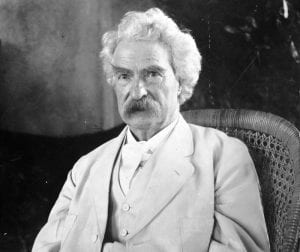
Samuel Langhorne Clemens was forced to drop out of school at age 12 and to work for food rations after his father died. By age 15, he was contributing articles to his brother’s newspaper. He later moved to New York City to work as a printer and, like Bradbury, educate himself in public libraries. Before becoming a journalist at almost 30, Clemens worked as a steamboat pilot for many years. When he reinvented himself as a writer, his work as a boat pilot would provide his new identity (“mark twain” is steamboat slang for measuring two fathoms). His book, The Adventures of Huckleberry Finn, is often called the Great American Novel. some of his other works include The Adventures of Tom Sawyer, A Connecticut Yankee in King Author’s Court, and The Prince and the Pauper.
Augusten Burroughs
Born into a family of eccentric, highly-educated individuals, Augusten Burroughs was christened Christopher Richter Robison. The future writer dropped out of school in sixth grade, but he obtained his GED at 17. Burroughs then changed his name and enrolled at Holyoke College as a pre-med student, only to drop out before the first semester was over. Burroughs published his controversial first memoir, Running with Scissors, in 2002. Other books include Magical Thinking: True Stories, Possible Side Effects, and A Wolf at the Table.
Charles Dickens
From a young age, Charles Dickens knew he wanted to be famous. One of eight children, Dickens received only sporadic formal education interspersed with factory jobs that offered abysmal working conditions. His father was thrown into debtor’s prison when he was a boy, and his mother and youngest siblings went to live with him there. Dickens’ experiences as an impoverished child would become the inspiration for many of his novels. He eventually became a freelance reporter and is now known as one of the foremost Victorian novelists, having authored such books as A Tale of Two Cities, Oliver Twist, and David Copperfield.
Jack Kerouac
Though he knew he wanted to be a writer, this famous member of the Beat Generation made it to Columbia University on an athletic—not an academic—scholarship. He was a skilled running back for the football team there, but he broke his leg during his freshman year. He made it back for one more season, during which he fought so often with his coach that he was compelled to drop out of school altogether. It was his journey to Columbia, though, that would introduce him to many of the Beats with whom he would soon launch a literary revolution. His best books include, On the Road, The Dharma Bums, Big Sur, and Desolation Angels.
William Faulkner
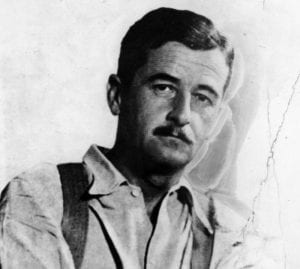
This Nobel Prize winner never earned a high school diploma. Not tall enough to enlist in the U.S. Air Force, Faulkner lied his way into the Canadian Royal Air Force for one year before World War I ended. He later enrolled in the University of Mississippi, but he only attended classes for three semesters before dropping out. Faulkner went on to work as a bookseller’s assistant and postmaster before publishing his poetry for the first time at the age of 27. He went on to write such books as Intruder in the Dust, The Sound and the Fury, and Light in August.


Extra trivia—Harper Lee and Truman Capote (then named Truman Persons) were pre-school-age friends growing up in the small town of Monroeville, Alabama. As kids, they shared a typewriter to crank out their juvenile stories. That backwater southern town produced two of the American literary geniuses of the latter half of the 20th century.
Thanks. Strange. I’ll check into that.
Fascinating about Capote and Lee. I know they came to Kansas together when he was working on the In Cold Blood book. I remember the Clutter family murders well. It was huge news when I was growing up on our farm. We never used to lock our doors. But when the Clutters were murdered, we locked ’em.
‘